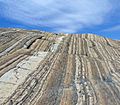Johnnys Island facts for kids
| Geography | |
|---|---|
| Location | Hudson Bay |
| Coordinates | 56°05′N 78°56′W / 56.08°N 78.93°W |
| Archipelago | Belcher Islands Canadian Arctic Archipelago |
| Administration | |
| Territory | Nunavut |
| Region | Qikiqtaaluk |
| Demographics | |
| Population | Uninhabited |
Johnnys Island is a small island in Canada. It is located in a very large body of water called Hudson Bay. This island is part of a group of islands known as the Belcher Islands.
Johnnys Island is in the Qikiqtaaluk Region of Nunavut. Nunavut is a huge territory in northern Canada. The island is not home to any people, meaning it is uninhabited.
Location and Group
Johnnys Island sits in the vast waters of Hudson Bay. This bay is a very large inland sea in northeastern Canada. It is connected to the Arctic Ocean.
The island is part of the Belcher Islands. This group includes many islands. They are found in the southeastern part of Hudson Bay. The Belcher Islands are also part of the larger Canadian Arctic Archipelago. This is a huge group of islands in the Arctic.
Nearby Islands
Johnnys Island is surrounded by many other islands. These islands are also part of the Belcher Islands group. Some of the islands close to Johnnys Island include:
- Karlay Island
- Mata Island
- Nero Island
- Dove Island
- Fair Island
- Bradbury Island
- La Duke Island
- Mavor Island
- Ney Island
- Tukarak Island
- Walton Island
- Camsell Island
- Flaherty Island
- Innetalling Island
- Range Island
- Twin Cairns Island
About the Belcher Islands
The Belcher Islands are known for their unique geology. They have very old rocks, some dating back about 2 billion years. These rocks show how the Earth's surface has changed over a very long time.
Most of the islands in this group are uninhabited. However, one island, Flaherty Island, has a small community. This community is called Sanikiluaq. It is home to the Inuit people. They are the native people of the Arctic region.
The islands are also known for their wildlife. Many birds live there, especially in the summer. Arctic animals like polar bears and seals can also be found in the area. The cold climate and remote location make these islands a special place for nature.
Images for kids
-
Folded ancient rocks called dolomites in the Belcher Islands.
See also
 In Spanish: Islas Belcher para niños
In Spanish: Islas Belcher para niños




